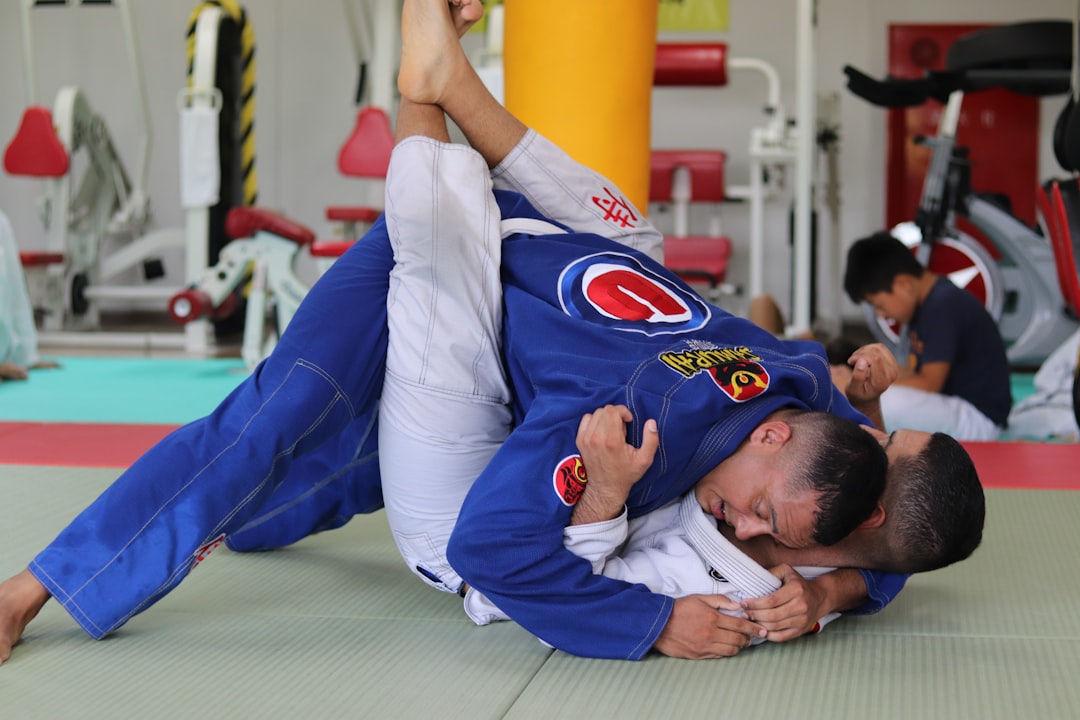To effectively train karate at home, you need a dedicated space of at least 6×8 feet free from obstructions and distractions. Essential equipment includes a high-quality karate mat for safety, a mirror to monitor form, and appropriate training gear such as a karate gi, focus mitts, and either a heavy bag or kick shield for practicing strikes and kicks. A sturdy punching bag can enhance your punching techniques if applicable to your style. A reliable timer or stopwatch is necessary to adhere to traditional training protocols that involve time-based exercises. With the right space, gear, and focus, training karate at home becomes a feasible and rewarding practice, allowing for progress in your martial arts journey without the need for a physical dojo.
karate enthusiasts aspiring to refine their skills from the comfort of their own space will find valuable insights in this article. We’ll explore the fundamental equipment necessary for effective home training, ensuring you can master the art of karate with precision and dedication. From selecting the optimal area in your home to acquiring essential gear, this comprehensive guide will outline what you need to train karate at home, transforming your living quarters into a personal dojo. Join us as we delve into the key elements for a successful home karate practice, enabling you to progress on your martial arts journey.
- Essential Equipment for Training Karate at Home: A Comprehensive Guide
- Breaking Down Home Karate Necessities: Space, Focus, and Gear
- Mastering Home Karate Practice: The Right Tools for the Task
Essential Equipment for Training Karate at Home: A Comprehensive Guide

To effectively train karate at home, it’s crucial to have the right equipment on hand. The foundational piece of equipment for any karatekas training regimen is a quality karate gi, which is the traditional uniform worn in karate. A well-fitted gi not only provides the correct form and respect for the martial art but also allows for full range of motion during practice. Additionally, a comfortable, non-slip mat or flooring is essential to cushion your joints and prevent injuries while practicing techniques such as kicks, blocks, and strikes. This ensures that you can train with confidence, knowing that falls or missed movements won’t lead to harm. A sturdy and appropriately sized punching bag can also be beneficial for honing punching power and technique, though it’s not strictly necessary for all styles of karate. Do you have a space at home suitable for these activities? If so, ensuring it is clear of obstructions and has adequate flooring or mats is the next step. Are you equipped with a reliable timer or stopwatch to track the duration of your exercises and rounds? This will help you adhere to the traditional time-based structure of karate workouts. With these items, you’ll be well on your way to effectively training karate from the comfort of your own home.
Breaking Down Home Karate Necessities: Space, Focus, and Gear

To effectively train karate at home, one must consider their available space, mental focus, and the necessary gear. Firstly, ensure you have a clear area large enough to practice your kata and execute techniques without obstruction. A room with enough floor space to move around freely is ideal; measure approximately 6×8 feet for a minimum practice area. Can you allocate a space in your home that offers this much room? If so, position your training equipment within easy reach to maintain the flow of movement during your routine.
Secondly, focusing the mind is as crucial as the physical aspect of training. Find a quiet corner where you can train without interruptions. What about noise-cancelling headphones or a ‘Do Not Disturb’ sign to signal others not to interrupt your training session? As for the gear, essential items include a karate gi, a well-balanced set of training dummy, focus mitts, kicking shield, and a heavy bag to practice strikes and kicks. Are these pieces of equipment on your list for setting up your home karate dojo? Remember to select a gi that is comfortable and meets the standards of your chosen style, be it Shotokan, Kyokushin, or any other discipline. With the right space, focus, and gear, training karate at home can be an effective and rewarding experience.
Mastering Home Karate Practice: The Right Tools for the Task

To effectively train karate at home, one must have the appropriate equipment to facilitate a comprehensive practice routine. A high-quality karate mat is essential for safety; it provides a cushioned surface that lessens the impact on your joints during practice, ensuring you can perform techniques like kicks and blocks without risking injury. Additionally, ensure you have enough space around you for free movement and to prevent any potential collisions with furniture or walls. A mirror can also be beneficial, as it allows you to check your form and posture, which are crucial aspects of proper technique execution in karate.
For a well-rounded training session, a focus mitt set can be an excellent tool for practicing strikes with a partner, assuming you have someone available to assist you. Alternatively, a heavy bag or kick shield can serve as a stand-in for a partner when you’re training solo, enabling you to practice striking targets with precision and power. Including these items in your home training setup will significantly enhance your ability to train karate effectively outside of a dojo environment.
In wrapping up our exploration of training karate at home, it’s clear that with the right equipment and a dedicated space, practitioners can effectively hone their skills outside of a dojo setting. The essential gear for a home karate practice includes a reliable punching bag, focus mitts, protective gear, a stable mat area, and a selection of target pads to simulate various combat scenarios. By understanding the home karate necessities and mastering the use of these tools, karatekas can maintain consistent training routines that support their growth in this discipline. Whether you’re new to the art or an experienced practitioner, equipping your home with the necessary gear ensures that you can continue to train karate effectively and safely. Remember, the key to progress lies in regular practice and dedication to the craft, which these tools facilitate.
